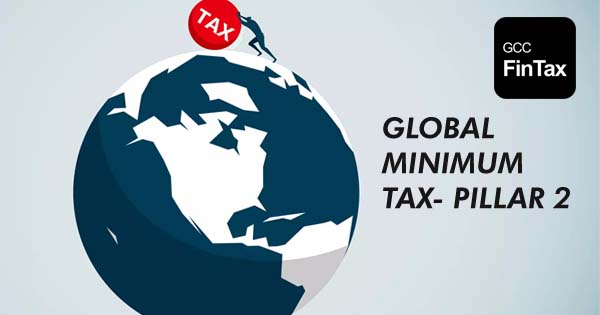
There are two major pillars related to tax which include Pillar 1 which focuses on partial re-allocation of the taxing rights, and the 2nd Pillar which focuses on the minimum taxation of the profits of the Multinational Enterprises. Pillar 2 is to set a floor to an excessive tax competitiveness. The aim of this pillar is to make sure that the multinational businesses will be subjected to a minimum tax level against all their yearly profits. The minimum tax will be of 15 percent. The following are exempted from tax in Pillar 2: The Government entities, the international organizations, any non-profit organizations, the pension funds, as well as, the investment funds which are parent companies of Multinational Enterprise Group.[1]
Profits of multinational companies that are currently tax-free or have an effective tax rate lower than the global minimum tax rate would be subject to a minimum tax of at least 15% under the current Pillar 2 Blueprint. Multinational Enterprises with a consolidated group revenue of at least EUR750 million will be subject to this global minimum tax (similar to the Country-by-Country Reporting threshold). An Income Inclusion Rule, that works like Controlled Foreign Company rules where profits of the group companies which are being taxed at a tax rate that is lower than the minimum tax rate are incorporated in a tax base of Ultimate Parent Entity (UPE) and thus subject to a ‘top-up' tax in that jug, is the main mechanism proposed to ensure the taxation of “untaxed” profits. If the UPE's home country did not implement the Income Incision Rule, the succeeding intermediate holding company among the ownership chain will compute, as well as, pay "top-up taxes" on their low-taxed subsidiaries. It is a challenging process which requires times till a global consensus is made, and relevant details are confirmed.[2]
Pillar 2 incorporates two major rules and one more rule associated with tax treaties. They all are applicable to companies with revenue of over €750 million.[3]
The first rule is the "income inclusion rule," that defines whether a company's overseas income has to be included in the parent company's taxable income. When tax rate is below 15%, more taxes will occur in the home jurisdiction of a company. After deducting 7.5 percent of the value of tangible assets (such as equipment and facilities) and personnel costs, the income inclusion criterion would apply to overseas profits. The discount would be reduced to 5% after a five-year transition period. The income inclusion rule, like other regulations that tax foreign earnings, will raise the tax costs of cross-border investment and have an impact on corporate decisions about where to hire and invest throughout the world, including in domestic operations3.
The “under-taxed payments rule,” which would allow a government to deny a deduction or impose a withholding tax on cross-border payments, is the second regulation in Pillar 2. The under-taxed payments rule may apply if a corporation in one country makes payments to its parent entity (which is in a low-tax jurisdiction). When these two rules are combined, they generate a minimum tax on both domestic and international corporations that invest in the United States. Both rely on a minimum rate of 15%, and they would be applicable to a state where a firm does business3.
The “subject to tax rule” is the third Pillar 2 rule, which is intended to be employed in a tax treaty framework to allow countries to tax contributions that would otherwise be subject to a low rate of tax. This rule's tax rate would be between 7.5 percent and 9 percent3.
The version of Pillar 2 that has been given is more of a template than a necessity for governments to adopt exactly what has been described. However, if enough countries implement the laws, much of global corporate income will be subject to at least a 15% tax rate3.
To address the tax difficulties posed by the digitalization of the economy, the OECD/G20 Inclusive Framework on Base Erosion and Profit Shifting (IF) has agreed on a two-pillar strategy[4].
If members agree and release a strategy for implementation. Pillar Two will be enacted in 2022 and will take effect in 2023, according to this plan4:
[1] Brussels, “Global Agreement on Corporate Taxation: Frequently Asked Questions,” European Commission - European Commission, July 10, 2021, https://ec.europa.eu/commission/presscorner/detail/en/QANDA_21_3564.
[2] “Global Minimum Corporate Income Tax,” Deloitte, June 17, 2021, https://www2.deloitte.com/xe/en/pages/tax/articles/global-minimum-corporate-income-tax.html.
[3] Daniel Bunn, “What's in the New Global Tax Agreement?,” Tax Foundation, July 2, 2021, https://taxfoundation.org/global-tax-agreement/.
[4] OECD. “Statement on a Two-Pillar Solution to Address the Tax Challenges Arising From the Digitalisation of the Economy.” OECD, July 1, 2021. https://www.oecd.org/tax/beps/statement-on-a-two-pillar-solution-to-address-the-tax-challenges-arising-from-the-digitalisation-of-the-economy-july-2021.pdf.
Disclaimer: Content posted is for informational & knowledge sharing purposes only, and is not intended to be a substitute for professional advice related to tax, finance or accounting. The view/interpretation of the publisher is based on the available Law, guidelines and information. Each reader should take due professional care before you act after reading the contents of that article/post. No warranty whatsoever is made that any of the articles are accurate and is not intended to provide, and should not be relied on for tax or accounting advice.
You can access Law including Guidelines, Cabinet & FTA Decisions, Public Clarifications, Forms, Business Bulletins for all taxes (Vat, Excise, Customs, Corporate Tax, Transfer Pricing) for all GCC Countries in the Law Section of GCC FinTax